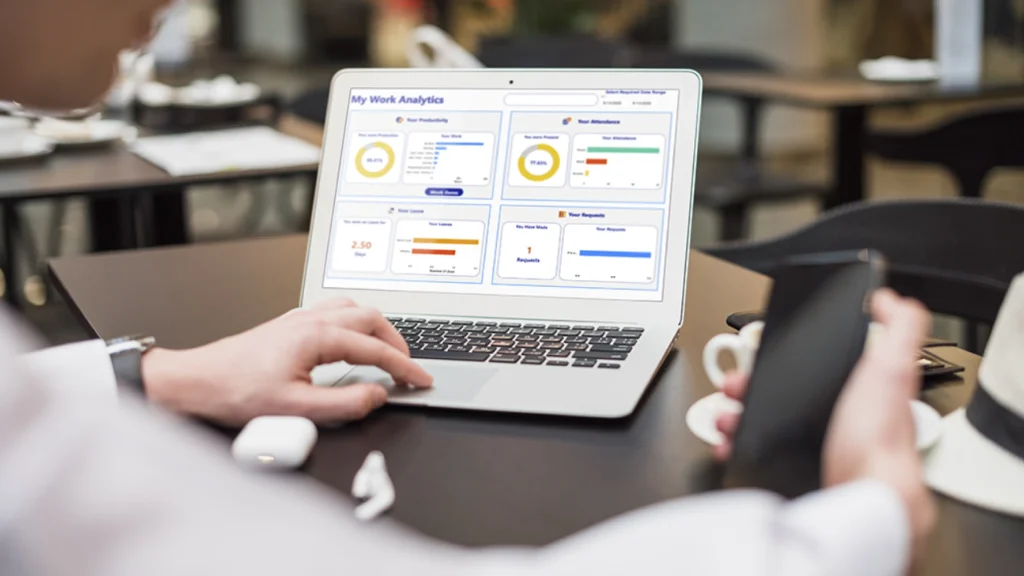Agile workforce planning is a dynamic approach that ensures your team is not only aligned with business objectives but also nimble enough to pivot as needed.
This planning method involves continuously assessing and adjusting the composition and skills of your workforce to meet rapidly changing business demands.
Unlike static workforce strategies, agile workforce planning emphasises flexibility, allowing organisations to react swiftly to market disruptions and capitalise on emerging opportunities.
The significance of an agile skillset
To effectively implement agile workforce planning, it’s essential to focus on aligning workforce capabilities with evolving business goals. This means recognising the significance of an agile skillset.
An agile skillset includes attributes such as adaptability, rapid learning, and proficiency in collaboration, enabling employees to effectively navigate and thrive in a dynamic workplace environment.
Incorporating agile workforce planning into your organisation can unlock numerous benefits:
- Facilitate improved workforce productivity and foster strategic decision-making
- Make informed, data-driven decisions that align with broader business objectives
- Enhance productivity and maintain competitiveness in the market by adapting to workforce needs promptly
Agile workforce planning is not merely about processes and structures; it’s about cultivating an agile mindset across the organisation. Engaging stakeholders and refining processes incrementally helps embed agility at every level.
Promoting a culture of adaptability

Building an agile workplace goes beyond just adopting new processes; it demands a cultural shift toward adaptability, continuous learning, and collaboration.
One of the core strategies in implementing agile workforce planning is nurturing a culture that embodies these elements. As businesses strive to maintain a competitive edge in today’s fast-paced environment, the ability to swiftly adjust and innovate becomes crucial.
An agile workplace is characterised by highly adaptable employees who are proficient in agile skills such as rapid learning, flexibility, and proactive problem-solving. These agile skillsets not only support business objectives but also foster innovation and resilience.
Promoting such a culture requires leadership to be role models of adaptability and provide continuous learning opportunities. Encourage experimentation and recognise that failure is simply a part of the learning process.
- Strategic decision-making: Utilising real-time data from tools like MiHCM’s HR analytics, organisations can make strategic decisions that enhance workforce agility. By understanding workforce trends and insights, businesses can anticipate needs and make informed decisions quickly.
- Remote workforce management: The integration of remote work capabilities through HR management software ensures that flexibility does not hinder productivity. Tools that facilitate communication, task management, and performance tracking are essential in managing a distributed agile workforce effectively.
- Continuous learning and development: By fostering a culture of ongoing education, businesses can ensure employees are proficient in agile skills. Offering workshops, courses, and mentorship programs keep employees engaged and skilled.
- Team collaboration and communication: Agile workplaces thrive on cross-functional teams breaking silos and enhancing collaboration. By leveraging HR software that streamlines communication and fosters teamwork, businesses can cultivate an environment of open dialogue and mutual support.
Incorporating these strategies not only aligns workforce capabilities with business goals but also allows for data-driven workforce decisions that can significantly optimise productivity and growth.
Moreover, streamlining workforce operations with digital tools, such as the MiHCM suite, provides the necessary infrastructure to seamlessly manage an agile workforce. This approach ensures that the organisation stays responsive to external changes and aligns with the overarching objective of maintaining an agile workplace.
Ultimately, building an agile workplace requires a commitment to continual adaptation and a willingness to embrace change. By investing in the right strategies and tools, businesses not only optimise operations and grow but also foster a resilient culture that can adapt swiftly to future challenges.
Key components of an agile skillset

In today’s rapidly evolving business landscape, possessing an agile skillset is indispensable for driving company growth and fostering innovation. An agile skillset comprises various competencies that enable employees to navigate and adapt swiftly to change, thus directly contributing to business development.
The core of an agile workforce planning strategy is cultivating a mindset that emphasises continuous learning, effective collaboration, and flexibility. These traits are vital as they empower employees to confront challenges head-on and implement solutions for unforeseen issues.
- Adaptability: Employees with agile skillsets can quickly adjust to new roles, processes, and expectations, ensuring organisational resilience amidst market changes.
- Rapid learning: The ability to comprehend and apply new knowledge efficiently allows employees to stay abreast of industry developments, ensuring their contributions are aligned with corporate objectives.
- Collaboration and communication: Cross-functional teamwork and open dialogue are crucial in an agile environment, fostering a culture of transparency and collective problem-solving.
Organisations that effectively harness these skills often experience heightened productivity and innovation, translating into significant competitive advantages. Successful agile teams, such as those at leading tech firms, demonstrate the power of incorporating adaptive abilities and a proactive outlook into their workflows, leading to sustained growth.
Leveraging these capabilities can position your company as a leader in your industry by satisfying evolving market demands while maintaining robust operational efficiency.
Technology as a catalyst for agility
Incorporating advanced technology, such as HR software, plays a crucial role in enhancing agile workforce planning. As businesses strive to maintain resilience, utilising technology becomes indispensable in streamlining operations, facilitating data-driven decision-making, and managing remote workforce functionalities effectively.
An effective HR software solution integrates robust data analytics capabilities, which help businesses identify trends and insights crucial for agile workplace planning. By leveraging real-time data, organisations can anticipate market changes and strategically align their workforce to meet evolving demands.
| Feature | Description |
|---|---|
| Data-driven analytics | Empower decision-makers with insights into workforce trends, enabling strategic alignment with business objectives |
| Remote workforce management | Facilitate communication, task management, and performance tracking to ensure productivity does not falter with location changes |
| Talent acquisition and onboarding | Streamline recruitment and onboarding activities, ensuring agility in acquiring and integrating new talent |
The integration of software solutions like MiHCM greatly enhances HR operations by simplifying processes such as attendance tracking, allocation of flexible shifts, and monitoring employee well-being, thus supporting an agile workplace. This technology adoption enables HR professionals to focus on strategic aspects rather than administrative tasks, promoting a culture of adaptability and growth.
Moreover, with the prevalence of remote work in many organisations, centralised HR software systems ensure cohesive communication and collaboration amongst distributed teams. This synergy fosters an environment conducive to innovation and rapid response to challenges, aligning with the principles of agile workforce planning.
In summary, HR software acts as a cornerstone in implementing agile workforce planning by providing the necessary infrastructural support and intelligence. It is not merely a tool but a strategic asset that transforms operations to withstand market fluctuations and emerge resiliently in a competitive landscape.
Lessons learned from industry leaders

Examining real-world instances of successful agile workforce planning provides invaluable insights into the transformative potential of these methodologies.
- Apple: This tech giant has long been a pioneer in implementing agile workforce strategies. By structuring cross-functional teams that emphasise rapid learning and adaptability, Apple fosters an environment of innovation that aligns workforce skills with dynamic market needs.
- Coca-Cola: Through streamlined HR operations and strategic workforce planning, Coca-Cola has successfully aligned its talent acquisition processes with agile methodologies. By integrating advanced analytics to analyse consumer trends, they can pivot workforce strategies quickly and maintain competitive advantage.
- NATO: As a complex organisation dealing with multifaceted global challenges, NATO’s adoption of agile workforce planning aids in swiftly adjusting human capital resources in response to geopolitical shifts. Employing agile strategies has enhanced their ability to strategise effectively in a constantly changing global landscape.
- NHS: The UK’s National Health Service (NHS) exemplifies agile practices in public sector organisations. By embracing agile workforce methodologies, the NHS has improved healthcare delivery and administrative efficiency, demonstrating the universal applicability of such strategies.
It’s clear that agile workforce planning has facilitated not only operational efficiency but also strategic growth across these organisations. By utilising tools that support remote workforce management, data-driven analysis, and agile methodologies, these organisations can swiftly adapt to internal and external pressures.
These case studies affirm that regardless of industry, the strategic incorporation of agile workforce planning can yield significant benefits, such as improved productivity and enhanced employee engagement.
Ahead of the curve
Embracing agile workforce planning is a pivotal step towards ensuring your organisation’s success in a rapidly changing business landscape. By committing to this approach, businesses can unlock substantial benefits that enhance operational efficiency and strategic resilience.
Additionally, using technology-driven solutions like MiHCM’s HR and payroll management software can greatly enhance workforce agility. These tools streamline HR operations, facilitate data-driven decision-making, and provide the infrastructure required for remote workforce management.
The path to future success begins with the intentional implementation of agile workforce planning. By leveraging agile principles and technology, you can ensure that your organisation is not only prepared for today’s challenges but is also poised to seize tomorrow’s opportunities.
Start your journey towards fostering a resilient and agile workforce now, setting the stage for enduring success.



